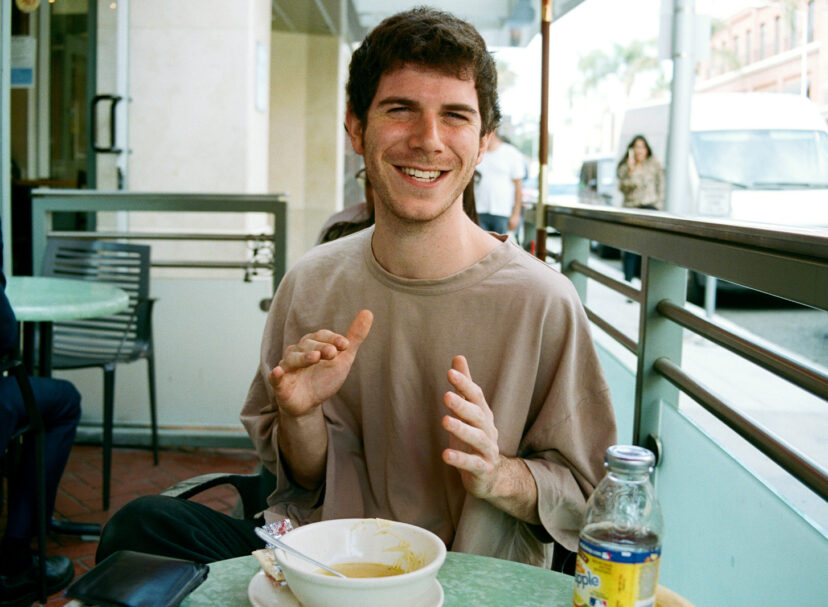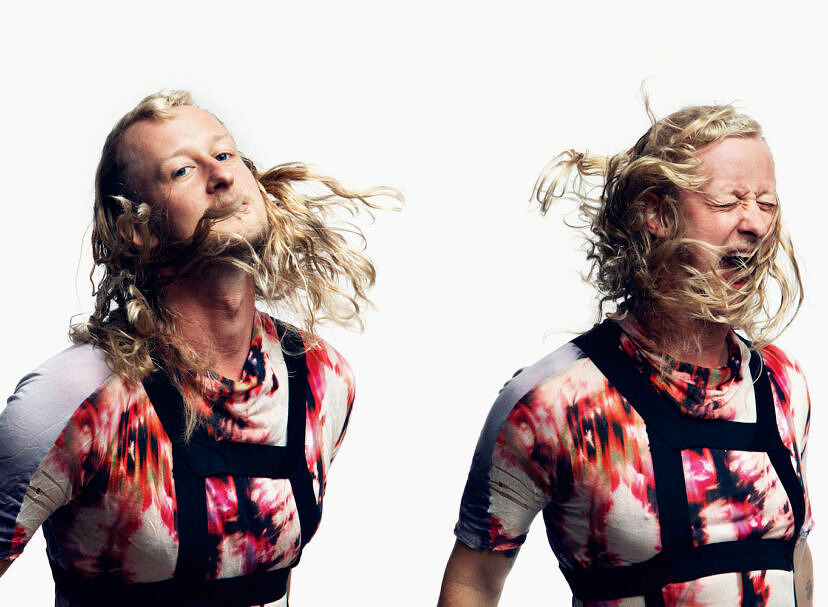Text by Monica Uszerowicz
All images courtesy of Steve Turner Contemporary and Yung Jake
To do even a bit of research on Yung Jake, the rapper-artist-polymath-hybrid deemed “The Art World’s Favorite Rapper,” is to enter into a proverbial Internet k-hole, finding yourself at its edges, only to fall back in again. The term “meta” is mentioned as a descriptor so many times that it, too, becomes meta. This, of course, is always used to explain the self-referential nature of everything he does. A purveyor of hyper-real Net Art, Yung Jake’s creative output can best be encapsulated by E.m-bed.de/d, an HTML 5 music video that hijacks the viewer’s screen and plays out his lyrics in real time: the mention of a Justin Bieber shout-out produces said tweet on your screen; the described “banner bitch” in a faux-American Apparel ad walks into the video to mingle with Yung Jake. Art journals he name-drops took the bait, it seems, and went on to write about him; he then added these articles to E.m-bed.de/d as pop-ups. They have become further components of what is ultimately a tripped-out cluster of data, simultaneously mocking and praising the rise to fame that comes with a YouTube video. (The initial video that garnered the attention: “Datamosh.”)
I was just way more passionate about rap and pop culture to keep doing my previous art practice. I was already doing it, just wasn’t focused on it as my primary practice. I shifted my focus.

A CalArts graduate, the actual Yung Jake conducts interviews only via text message, which creates a barrier between the press and the formulation of a complete understanding about him—it’s at best a deliberate tool, at worst annoying (and at its most likely, just laziness). To fully comprehend Yung Jake, it’s almost best to perceive him less as character, more as concept. Yung Jake (or the dude behind Yung Jake) has been an artist much of his life; Yung Jake was, according to his website, “born on the Internet in 2011.” In a 2013 interview with La Weekly, he explained, “everytime I made a painting it was about being black all da sudden. so I started making raps about pretty-hoe-bitches and suddenly blackness wasn’t an issue anymore.” Followed up about this, he states, “I was just way more passionate about rap and pop culture to keep doing my previous art practice. I was already doing it, just wasn’t focused on it as my primary practice. I shifted my focus.”


The raps themselves are essentially all his, particularly in terms of theme, but the extras are subject to creative collaboration. Midway through E.m-bed.de/d, you’re likely to notice a slew of credits, portrayed in the style of a Facebook chat “online” list. Among them are cinematographer Temra Pavlovic, programmer Vince McKelvie, and producer Max Barbaria, Yung Jake’s childhood friend: “he’s my friend from back home, we went to elementary school. he helps me with everything from melody to lyrics. my more recent beats aren’t his but he still helps give notes on them and even still helps me with melodies and lyrics and stuff like that.” Videos like “Datamosh,” too, are conceptually Yung Jake’s own, but the ways in which they’re showcased are group efforts: “I come up with the concepts,” he says. “I don’t care that much about writing the lyrics or making the visuals. but I usually end up doing a lot of it myself. If I had the choice I wouldn’t do any of that…I would rather have other ppl do it that are more talented.”


Yung Jake displayed his exhibition, Augmented Real, at Sundance’s New Frontier Lab in 2013; there, attendees could use the Yung Jake app as a group—after pointing your phone at the Yung Jake Rock (find it here), you, too, can interact with a Yung Jake avatar. Programmed by McKelvie—who also programmed E.m-bed.de/d—it makes sense Yung Jake would appear as an unreal caricature both of himself and the creepier facets of technology (digitized Yung Jake is pretty Uncanny Valley). But his aforementioned practice is expansive enough to include the visual art he was working on pre-music career; in the past year alone, Yung Jake has had two solo exhibitions at Steve Turner Contemporary—the first, “Drawings,” featured seemingly blank monitors alighting the room. In spite of their digital presentation, viewers had to see the ironically and aptly titled “Drawings” in person for the full effect: uneasy cursors and arrows appeared on screen, shaking like little phantoms.

The second, “New,” filled an eerie space with—as per the show’s press release—“reclaimed scrap metal upon which internet content has been attached or printed” (a dumpster bearing the Vevo logo; skeleton and balloon clip art placed on found metal, hanging like totems). “It was cool to make physical stuff,” he says. “I went to a bunch of metal yards.” Though the Internet ephemera is a facet, Yung Jake explains “it’s about me returning to physical work. my relationship to the city…like that industrial shit is everywhere. I traveled a lot growing up and no matter where you go, you’ll see stuff like that. as long as things are being built that stuff exists. you can relate to the stuff I stuck on it but I almost don’t care about that. like if I could just collect the metal I would. but it wouldn’t be as an art thing, it would just be because I like it.”
Still, the mediums he’s into—“clothing design product design acting directing”—are all part of the Yung Jake aesthetic: the Internet. He raps, wryly, wisely, and sometimes typically, then name-drops Ryder Ripps, sharing the story of the Internet while utilizing all its parts, making fun of and describing its nuances all the same. It’s a particular quality of Net culture to thrive within it while sarcastically decrying its problematic ubiquity. We’ve mostly come to accept that things like Facebook are real life; that an online article is as legitimate as a print one (meta, again); that cat videos are funny. The “meta” essence of Yung Jake is less about his work itself and more about his very existence as something of a meme: he’s a character, maybe, but a mostly earnest one—kind of like your Facebook profile. It’s real, not real, hyper-real all at once. His entire persona functions as a summary of the social media experience.

